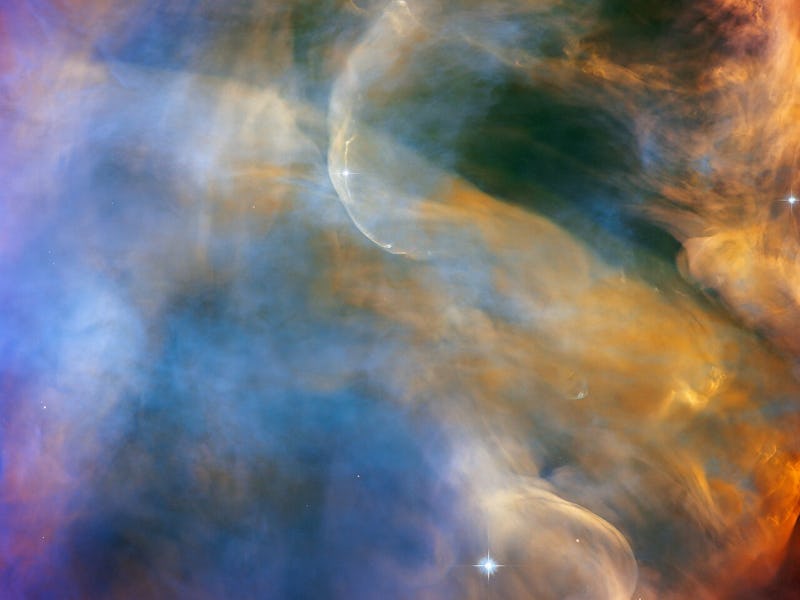Look! Hubble snaps a dazzling image of the Orion Nebula's surreal rainbow clouds
Hubble, you've still got it!

The James Webb Space Telescope is the biggest, newest thing in astronomy, but Hubble is pulling out all the stops to remind all of us that it’s still awesome.
The Hubble Space Telescope, in operation since 1990, snapped this rainbow cloudscape is an area on the outskirts of the Orion Nebula where jets of charged particles from a newborn star, IX Ori, slam into clouds of gas and dust at hundreds of kilometers per second. The energy from that collision lights up the cloud along the shock front.
Astronomers use observations like this one to study the structure of the gas and charged particles flowing from newborn stars like IX Ori, learning more about how young stars affect the nebula that spawned them.
Hubble captured this image with its Advanced Camera for Surveys. It’s one of 520 ACAS images that, when assembled into a mosaic, give us the sharpest view so far of the Orion Nebula. Later in its first year, Webb will also point its instruments at the Orion Nebula, although it will focus on stellar nurseries deeper in the region’s interior.
The curving structures in the gas at the top and bottom of the image are outflows of material from nearby young star IX Ori.
If you can find the constellation Orion in the night sky, the Orion Nebula is easy to spot; it’s the larger blur of light at the tip of Orion’s “sword.” Thousands of new stars are being formed in this massive region of gas and dust about 1,000 light years away — the closest center of massive star formation to Earth.
This article was originally published on